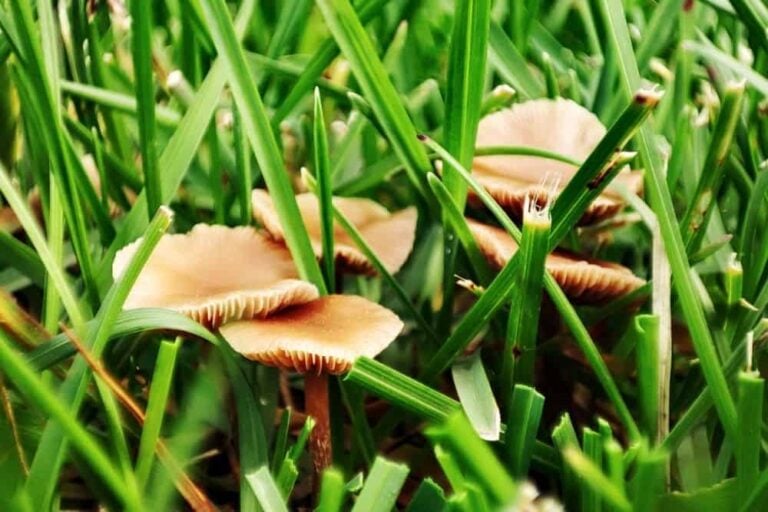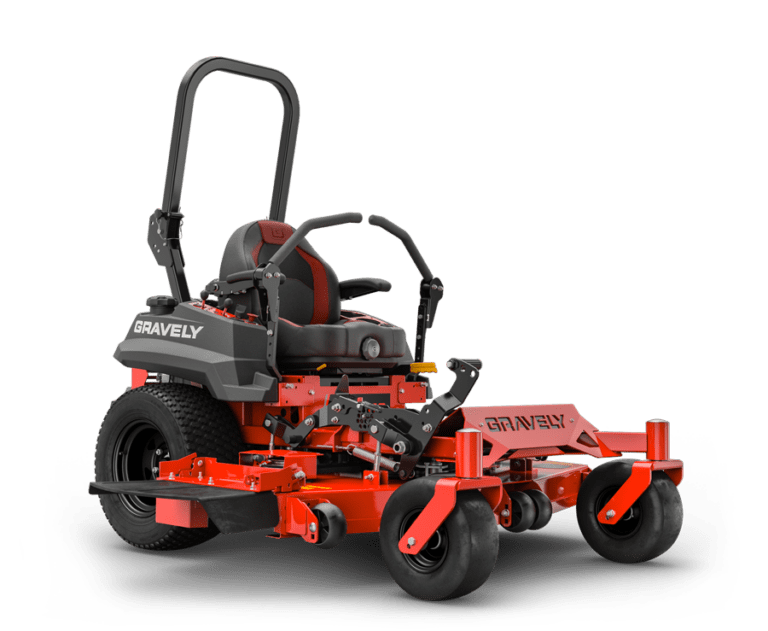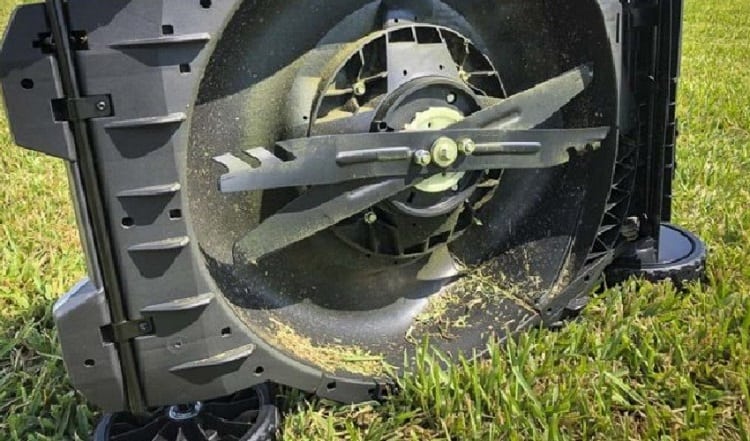When to Fertilize New Grass for Best Results
Growing grass is a pretty simple thing to do, traditionally it does not take an agonizing amount of effort, and people can even end up accidentally growing it.
However, cultivating a new lawn does require a certain level of diligence to give the grass seeds the best chance to thrive and germinate properly. It is also very important that the roots grow deep into the soil to establish a beautiful lawn.
Today we will talk to you about when you should fertilize the new grass so that you reap the best results from your efforts.
The main benefit you will reap from having a well-established lawn is that it will be hardier, and therefore more resilient to inclement conditions.
When you fertilize grass, you provide the grass seed or newly germinated grass with concentrated nutrients.
Although, you could theoretically introduce a fertilizer at any time at all, or not at all, doing so at just the right times in the grasses’ growth cycle can give your grass a boost, almost like steroids.
The nutrients available come in varying percentages, too, so different ones will be beneficial in different growth stages.
This is why it is so important that you choose a fertilizer that is suitable for the stage of growth. If you choose a fertilizer that is too highly concentrated, it can actually burn your lawn.
Why Is It Important To Fertilize New Grass?
Each fertilizer contains essential nutrients that can improve the overall health of your soil The main nutrients they contain include potassium, nitrogen, and phosphorus.
Healthy soil will be more resilient against weeds, pests, fungus, erosion, runoff, and the development of patchy areas. Soil that lacks these essential nutrients can be a different growing medium.
However, too much fertilizer can lead to burning and using the wrong one can also have far-reaching effects on the soil in your area too.
When the ground is saturated with the nutrients found in fertilizer, it can actually end up leaking through to the water table and lead to a runoff.
Runoff fertilizer chemicals have been found to be responsible for toxic algae blooms in ponds and lakes, which is harmful to both people and to pets.
This is why fertilizers are often highly regulated, and often only certain amounts can be purchased at any one time.
How Do You Choose The Right Fertilizer?
There are two main types of fertilizer for you to begin with. You can use regular fertilizer which is slow release, or a starter fertilizer which is quick release.
When you are thinking about fertilizer, think of it like our food, and how the dietary needs for humans differ by age groups, baby diets differ from adult diets after all.
You could try ‘Weed and Feed’ type fertilizers as they contain herbicides such as corn glutes, which prevents weeds from germinating.
This is definitely noteworthy, it should be avoided when planting new grass seeds as it will likely prevent your grass seeds from germinating too.
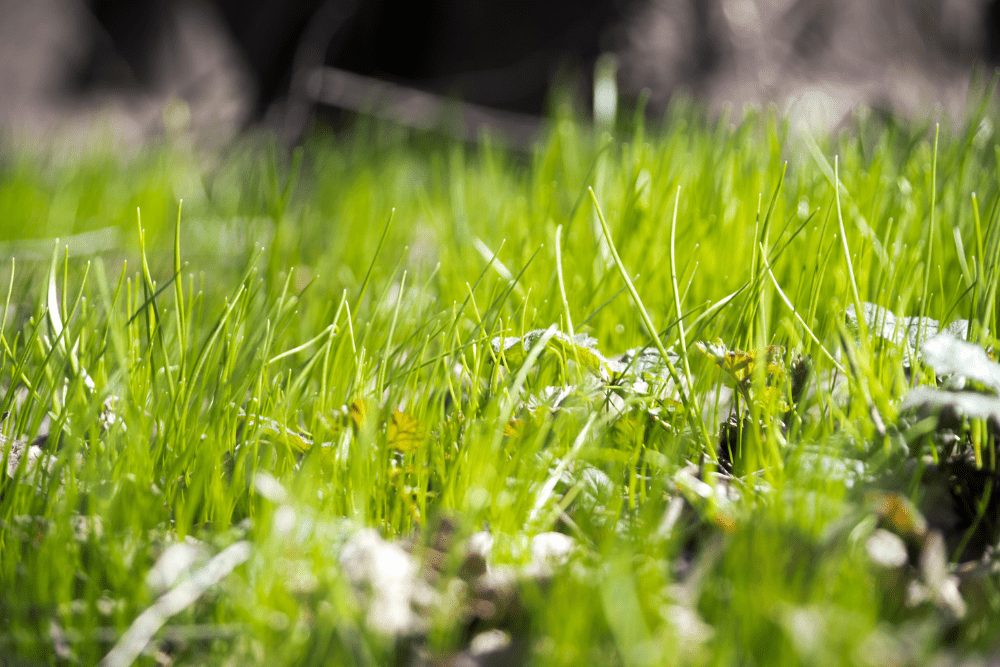
Our Recommendations
If you have crabgrass, you may want to use a fertilizer for starting with a crabgrass preventer.
These, unlike many other weed and feed products will not harm new grass as it germinates, but it does, at least in most experiences, successfully block out crabgrass and other common weeds for a good 4 to 6 weeds.
This gives your grass time to establish itself. A single bag of this stuff will go a long way too, which is a plus.
What Nutrients Are In Lawn Fertilizer?
Let’s understand the nutritional value of fertilizer. Every fertilizer has a different ratio of nutrients, and these ratios are usually displayed on the fertilizer packaging as a set of numbers separated by dashes.
The sequence these numbers indicate the amount of nitrogen, phosphorus, and potassium. They are known as NPK ratios.
If you see three numbers on a bag of lawn fertilizer, then they will be listed in the order of Nitrogen- Phosphorus-Potassium.
Doing a soil test will help you to determine which type of fertilizer will best provide your lawn with the healthiest life.
You should just make sure that you buy a kit that goes a bit beyond simple pH levels and measure these three nutrient levels in a more detailed manner.
Note- Nitrogen, Phosphorus, and Potassium- The three key ingredients in your ideal fertilizer.
How Do The Ingredients Support New Grass?
So, how do each of these ingredients help to support your lawn’s overall health? Well…
Nitrogen is important for healthy leaf growth. The leaves you see above ground need this, it helps to make the grass look greener. So, next time you walk past a field and the grass does not look so green, remember, it could use a little more nitrogen.
Phosphorus is key as it is responsible for promoting root growth below the ground. It is important in getting your lawn established as it grows its first roots.
Potassium is very important as this nutrient helps to prevent disease, it also makes grass more resilient. It is like the building blocks of the grass’s immune system.
New grass seeds will need a starter fertilizer that has a high level of phosphorus and nitrogen as a quick release, so that all these nutrients are readily available in plentiful amounts for the seeds to start absorbing.
Quick-release nitrogen will also help seeds to absorb more potassium, too. While there are some areas that may actually restrict phosphorus usage exclusively to those who start new lawns, it is still ideal.
Ratio For Fertilizer On Established Grass
While we have spoken a lot about new lawns, let’s discuss already established lawns for a moment, too. Established lawns thrive best with fertilizers that are high in nitrogen.
Mature lawns do not need as much potassium or phosphorus, so you should look for a fertilizer that has a ratio with a larger first number and smaller second and third numbers. So a ratio such as 30-0-0 or 27-3-3 would be most appropriate for established lawns.
Especially if you are looking to green it up.
Ratio For Fertilizer On New Grass
If you are starting a new lawn, however, you want a starter fertilizer for new lawns that has a ratio closer to something like 21-22-4 of nitrogen, phosphorus, and potassium.
These nutrients should be quick release, so they are accessible to your seedlings straight away to help your new lawn to establish itself as fast as possible.
Potash, which is commonly found in soil, is a known source of potassium, so it is often common for potassium levels in fertilizer to be really low, otherwise you would be overdosing your grass.
When Should You Fertilize Your New Grass?
It is very important that you ensure that your soil has the appropriate nutrients for new grass seed before you disperse the seeds itself.
Once you have prepared the soil for seed, or for sod, the final step before you get planting is to fertilize your soil with a good starter fertilizer. You can do this before you play down your seeds, or sod, or while you do it.
Once you have applied the starter fertilizer, do not reapply it. The ratios of nutrients can be harmful and can actually burn established grass.
It is best recommended that you instead use a nitrogen-rich organic fertilizer around 6 to 8 weeks after you have planted your new grass.
Although you might be eager to fertilize again to further encourage growth, fertilizing too much and too often is actually harmful. Doing so can actually burn your grass, it could leach into the water table, and cause other harmful or dangerous effects.
It is very important that, no matter how eager you are, that you wait a minimum of four to six weeks before you make another application of the fertilizer. It is best recommended that you wait 6 to 8 weeks, though.
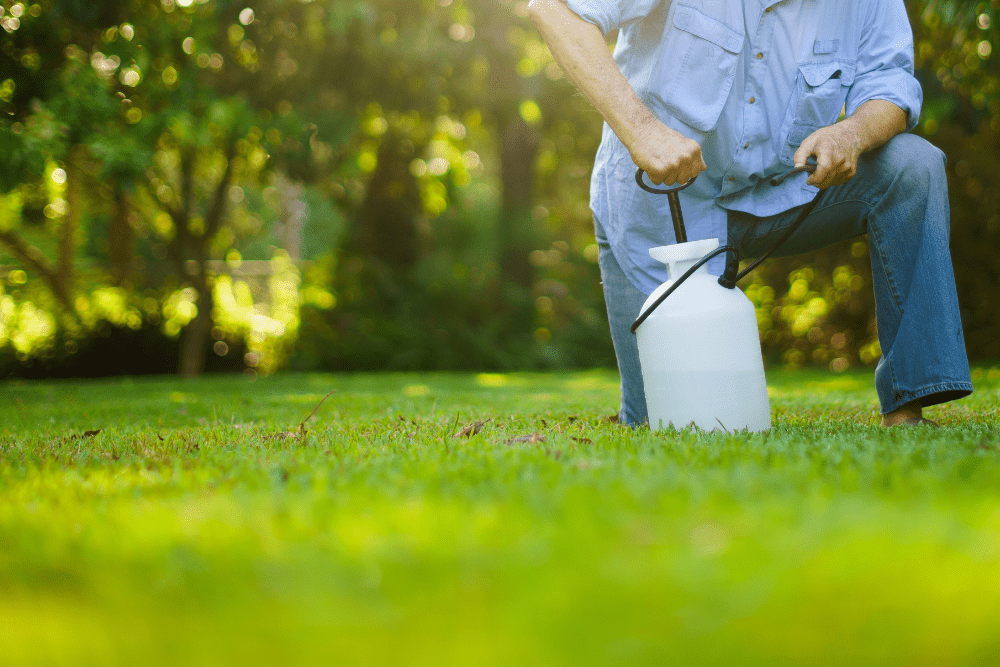
The Process
To make all this a little easier on you, we will provide you with a nice and easy step-by-step guide to help you along as you fertilize your first grass sod.
- Start off by dethatching and aerating the lawn if it needs it.
- If step 1 does not need to be done, then use an iron rake to loosen the soil and remove any dead grass.
- Remove any dead grass from the area where you are seeding.
- Start to apply the fertilizer evenly across the area where you are going to seed your grass.
- Apply a pleasant and generous amount of your grass seed to the area, make sure it is appropriate for your area and the conditions.
- Grab a leaf rake and use the back of it to work the seeds into contact with your loosened soil.
- Now you will want to apply a good ½ to ½ inch of compost loosely over the top of the grass seed to retain moisture and add in those important nutrients to your seedlings.
- Water it to keep the compost and your seedlings nice and moist until it becomes well established.
- Once the grass seedlings are established, you can now start to water it less frequently and more deeply to help to promote the growth of roots.
- Now it is time to maintain your lawn. Mow it once the seedlings are 3 inches tall to remove the top ½ to ¾ inches of grass blade. Use a sharp move blade, bag up your clippings and remove it.
- Then mow again once it reaches the aforementioned height. Never remove more than an inch.
- After 6 to 8 weeks, apply a nitrogen rich organic fertilizer.
Do You Need To Fertilize In The Fall?
In the fall, you may find that an application of a fertilizer with a good amount of slow-releasing nitrogen can help to bolster your grass for the coming cold months.
You should always do this before the first frost. This means that the 1st November in the Southern States is the latest to do this, and in the Northern States, it is even earlier.
Giving it a good nitrogen fertilizing before snow can be bad, as this can create mold and kill off your lawn.
Once spring comes around, and you have an established lawn, the best time to fertilize will be once it has greened-up, and you have mown it a few times.
In late spring and summer, if it has been a bit neglected, give it a boost with a slow-release fertilizer in 1.5 to 2-month intervals.
How To Fertilize New Grass Seed
To fertilize new grass seed, simply start by weeding the area where you will plant your seeds. Then rake up the top layer of soil to loosen it. Now you will fertilize the new grass seed, applying it to the soil or doing it as you spread the seeds.
Then cover the seeds with a fine layer of soil via raking or springing a layer on. Light watering is okay, just do not uncover the seeds from their soil blanket by doing this too excessively.
The Only Way Is Up
Let us finish off by saying that if you are fertilizing a new lawn, then you want a lawn starter fertilizer that is high in phosphorus and quick-releasing nitrogen.
Slow release fertilizer high in nitrogen is best for planting sod or giving your current lawn a good boost.
Apply the fertilizer just before or at the same time as you plant your seeds. Follow all this, and you will be golden, while your grass will be green.


